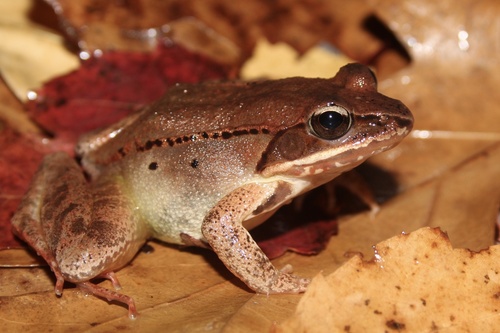
Wood Frog
The wood frog, Lithobates sylvaticus, thrives in North America's forests, boasting unique freeze-tolerance that sees it ‘frozen’ through winters. Recognizable by its black mask and earthy hues, this amphibian springs back to life as icy havoc thaws, playing vital roles in ecosystem balance.
5 years
Lifespan
7.9375 g
Weight
Length: 4 - 8 cm
Size
Brown, Grey, Red, Green
Color
1-2 years
Age of Sexual Maturity
Least Concern
Conservation Status
Stable
Population Trend
Distribution Range of the Wood Frog
Lithobates sylvaticus, commonly known as the wood frog, is native to North America. Its geographical distribution extends across Canada, Alaska, and into the northeastern United States, reaching as far south as Georgia and Alabama. The species is also found in parts of the Midwest and throughout the boreal forests of Canada and Alaska.
Wood Frog's Habitat
Environmental Conditions
Wood frogs primarily inhabit moist, forested environments such as deciduous and mixed woodlands. They are often associated with temporary, vernal pools and wetland areas during the breeding season. These frogs are adapted to cold climates and are one of the few amphibians found north of the Arctic Circle.
Ecological Niche
The wood frog plays a crucial ecological role as both predator and prey within its habitat. It feeds on a variety of small invertebrates, including insects and arachnids, helping to control their populations. As prey, wood frogs are an important food source for a variety of predators, including birds, mammals, and larger amphibians. Their ability to survive freezing conditions through cryoprotective mechanisms is a unique adaptation that allows them to inhabit northern regions.
Copyright @ Nature Style Limited. All Rights Reserved.
 English
English